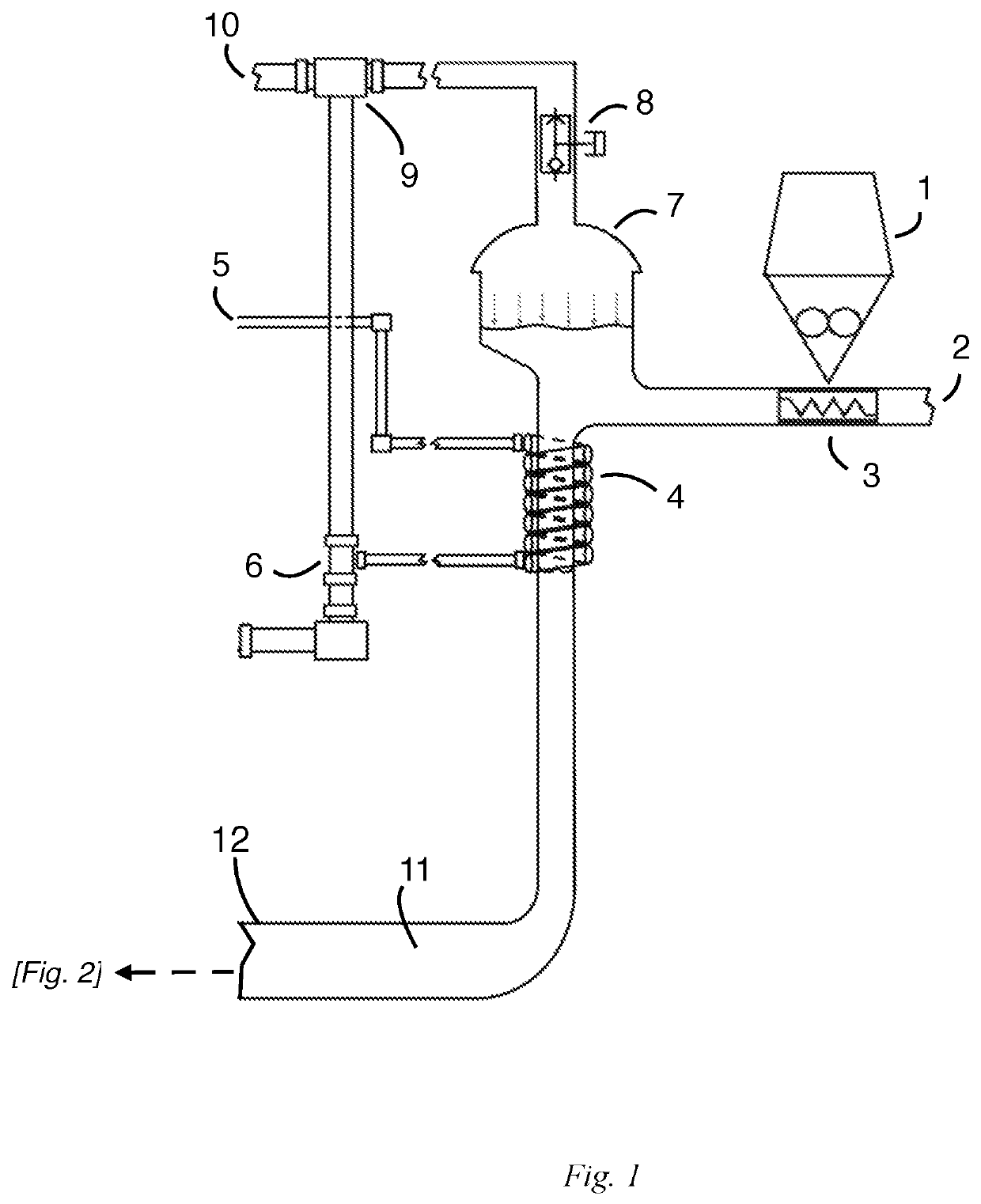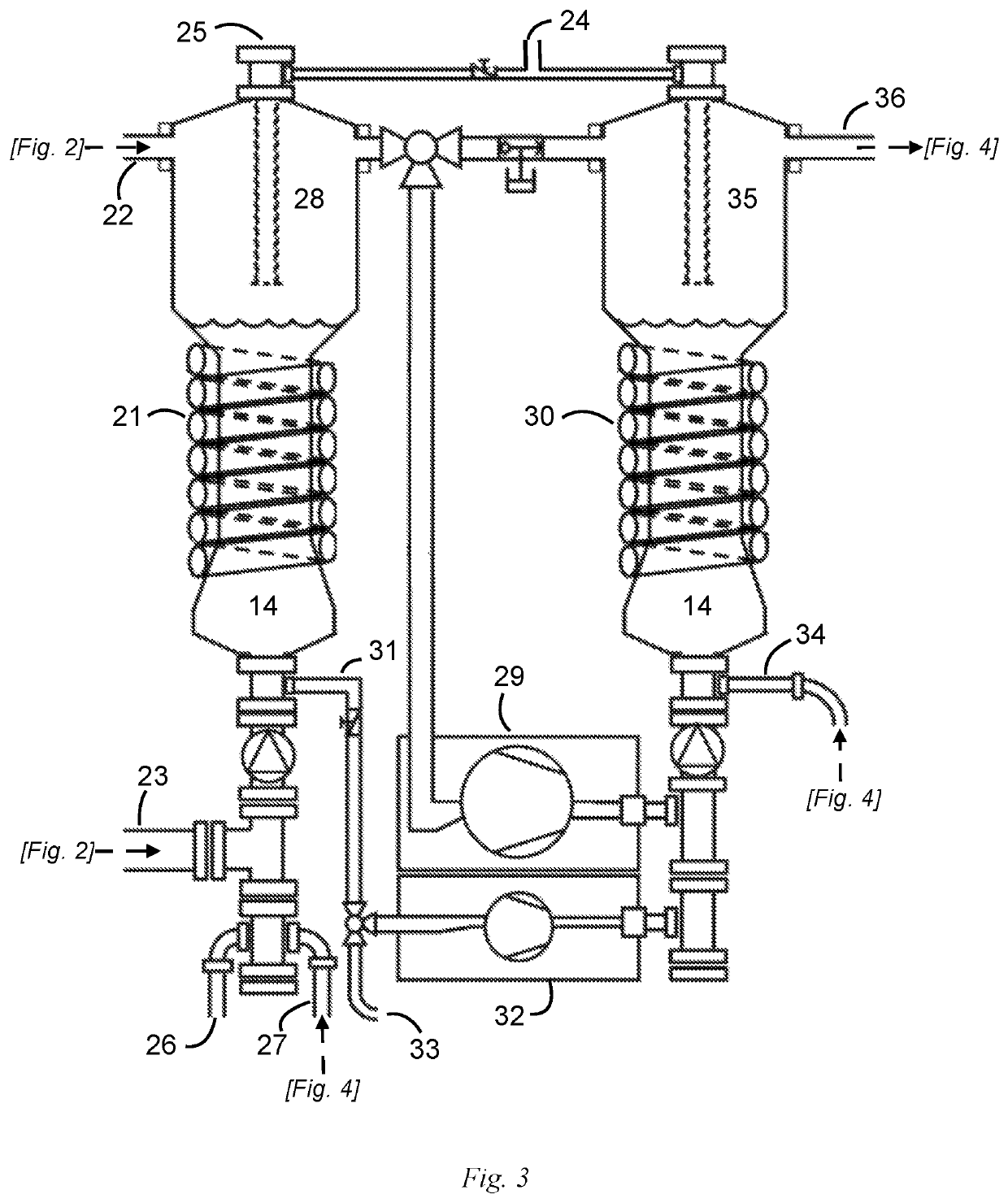Waste to energy conversion without CO2 emissions
a technology of waste and energy conversion, applied in the direction of waste based fuel, combustible gas production, chemistry apparatus and processes, etc., can solve the problems of community resistance to the presence of incinerators in general, difficulty in meeting increasingly stringent air pollution emission standards, and high moisture content of typical municipal waste, etc., to achieve zero atmospheric emissions
- Summary
- Abstract
- Description
- Claims
- Application Information
AI Technical Summary
Benefits of technology
Problems solved by technology
Method used
Image
Examples
Embodiment Construction
[0024]A key element of the present invention is the use of the Boudouard reaction (Equation 1), the conversion of carbon dioxide and solid carbon into carbon monoxide:
C(s)+CO2(g)⇄2CO(g) (Eqn. 1)
[0025]The Boudouard equilibrium favors the formation of CO at high temperatures, shifting to the right at temperatures above ca. 700° C. In the process of the invention, the Boudouard equilibrium is coupled with the water-gas shift reaction (Equation 2) at to 600-900° C., which converts the CO to CO2 and hydrogen:
CO+H2O⇄CO2+H2 (Eqn. 2)
[0026]The net result is shown in Equation 3:
C(s)+CO2(g)+2H2O⇄2CO2+2H2 (Eqn. 3)
[0027]The overall process transfers the potential chemical energy present in elemental carbon to the potential chemical energy found in hydrogen. This is accomplished by carrying out an initial low-temperature anaerobic pyrolysis, to produce syngas, bio-oil, and carbon char, and then recycling CO2, carbon biochar, and water (end products of the overall process) back into the system ...
PUM
| Property | Measurement | Unit |
|---|---|---|
| pressure | aaaaa | aaaaa |
| temperatures | aaaaa | aaaaa |
| temperatures | aaaaa | aaaaa |
Abstract
Description
Claims
Application Information
 Login to View More
Login to View More - R&D
- Intellectual Property
- Life Sciences
- Materials
- Tech Scout
- Unparalleled Data Quality
- Higher Quality Content
- 60% Fewer Hallucinations
Browse by: Latest US Patents, China's latest patents, Technical Efficacy Thesaurus, Application Domain, Technology Topic, Popular Technical Reports.
© 2025 PatSnap. All rights reserved.Legal|Privacy policy|Modern Slavery Act Transparency Statement|Sitemap|About US| Contact US: help@patsnap.com



